The Traditional Clothing of Palestine
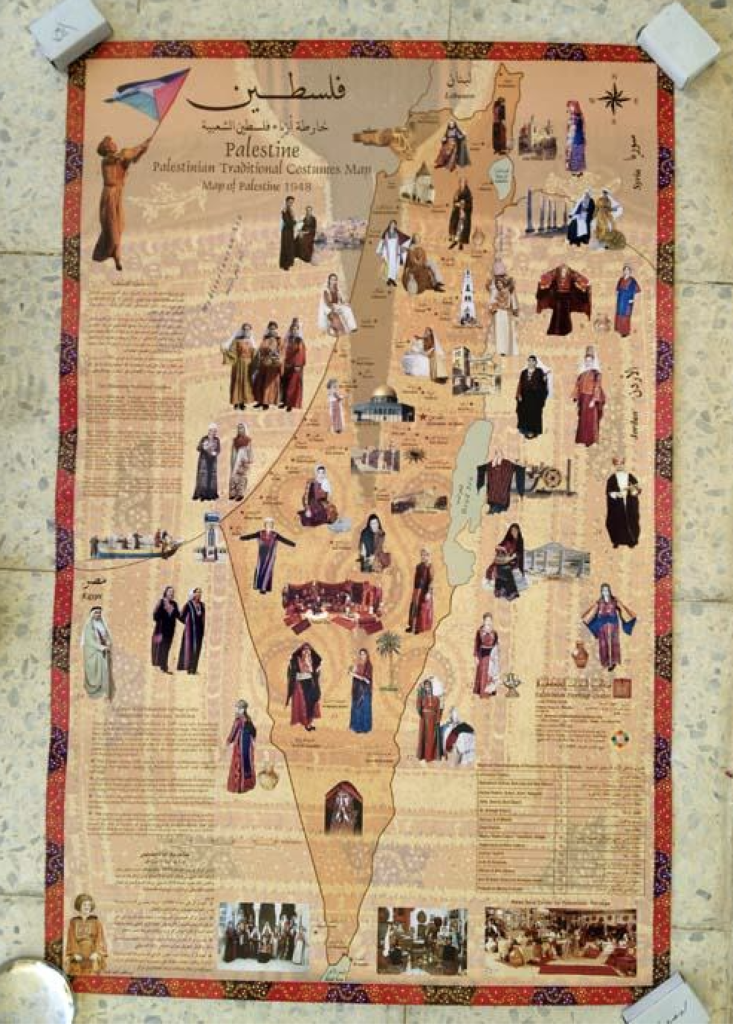
By: Pamela Dimitrova / Arab America Contributing Writer
The traditional clothing of Palestine is a reflection of a rich culture full of old traditions and a love for details, which is beautifully expressed in their traditional clothing. The clothing is extremely rich in embroidery, which is called ‘tatriz’. However, the style depends on many factors: locality, if the person is a villager or Bedouin or townsperson, their marital status and period.
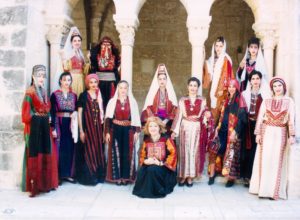
Female Traditional Clothing
Historically, the national women’s outfit of Palestine consisted of a wrap-around cloth, a cloak, a scarf, and a shawl. Later, females began to wear loose dresses or robes called “thob” and various jackets. But they still covered their heads with veils and headdresses.
There were several kinds of jackets used by Palestinian women: “taqsireh”, “jubbeh”, “jillayeh” (“jallayeh”), etc. They had different designs and embellishments, depending on the region of origin as well.
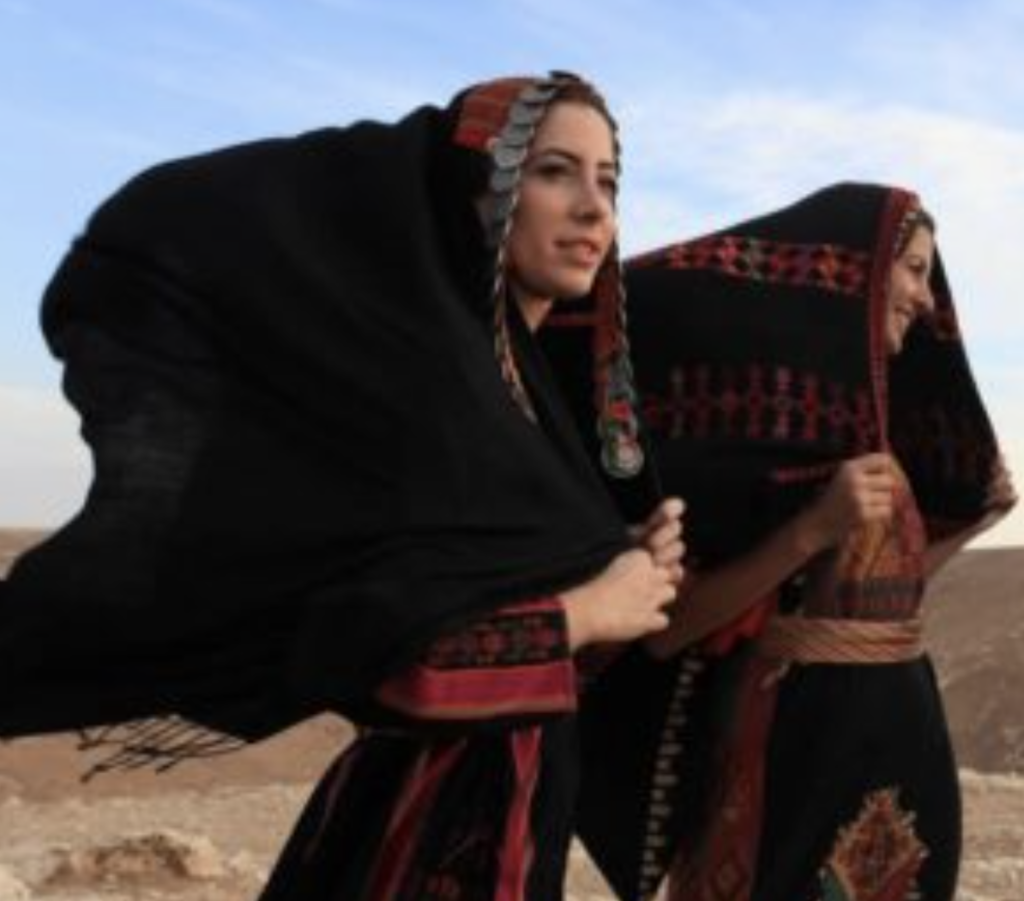
A wrap-around cloth made from white linen or cotton fabric was called “izar”. In time, it was replaced by a khabara – a wrap-around cloth made from black silk (sometimes other colors were used). Khabara had a lacing; the upper part of the garment covered the shoulders and the bottom part widened and formed a skirt.
The cloak worn by Palestinian women was called “malliaia”. The fabric and color were the same as for khabara but it had sleeves. On top of malliaia, women wore a waist-long cloak with a hood called “burnous”.
However, there is still a significant difference between the clothing from the North and the South:
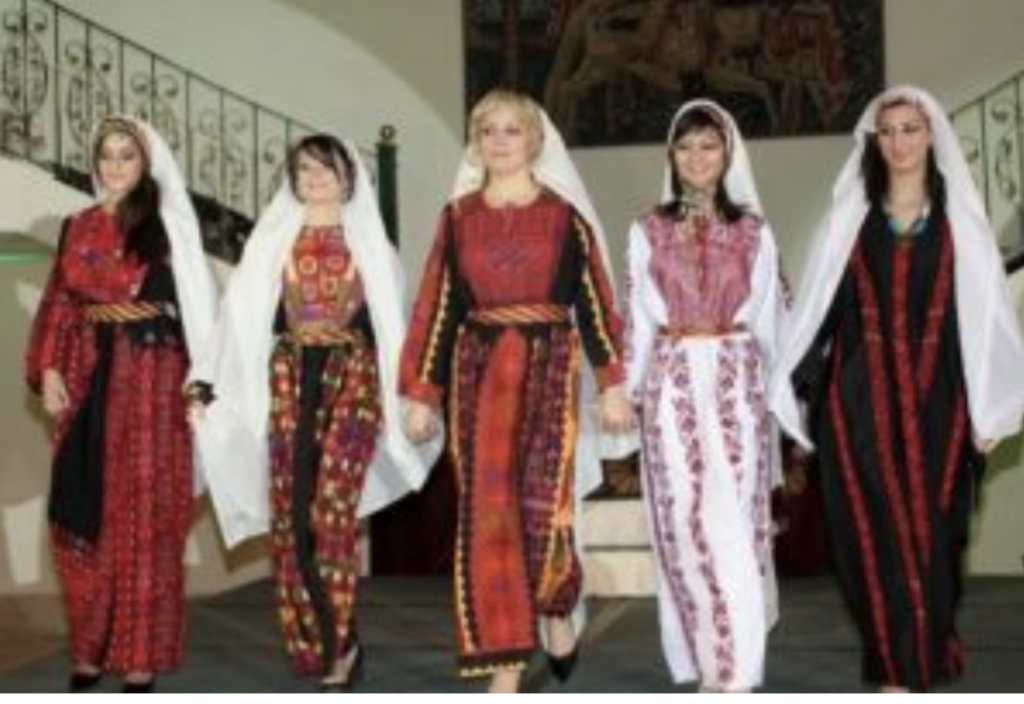
North Palestine
Initially in the north (around Nazareth & Galilee), the main garment for village women was a front opening brightly colored coat which could be plain (dura`ah) or ornamented (jillayeh). Later (the 1950s) this was replaced by a different style of coat – the qumbaz – which had long sleeves and long side slits. These were worn over a long-sleeved shirt (qamis) and ankle-length pants (elbas or sirwal/shirwal). The pants were initially narrow and embroidered on the lower leg.
Bedouin women in the north, by contrast, wore a blue or black thobe or shirsh with long tight sleeves and a long neck opening. Decoration includes embroidery along the seams, above the hem, and around the neck or four or five horizontal lines embroidered bands above the hem. (This style is similar to villages in Syria and northern Jordan)Southern village women did not wear coats but rather dresses called thobes or jillayeh. Necklines varied with the region and could be round with chest slits, V-necked or scoop-necked. Sleeves could be full or tight. Early examples had full skirts but this became tighter over time. Colors could be white or black depending on the region. White underdresses – or later European styled fustans (dresses) and undecorated, long pants were worn under the dresses.
South Palestine
Southern Bedouin women wore a similarly shaped, but more voluminous, light blue or black dress (thobe) with winged sleeves. These sleeves narrowed by the 1960s. From the 1930s they also included cross-stitched embroidery but in a different style to the villagers. The embroidery is usually red for women and blue for unmarried girls. Brightly colored and patterned dresses (fustan) were worn under the overdresses.
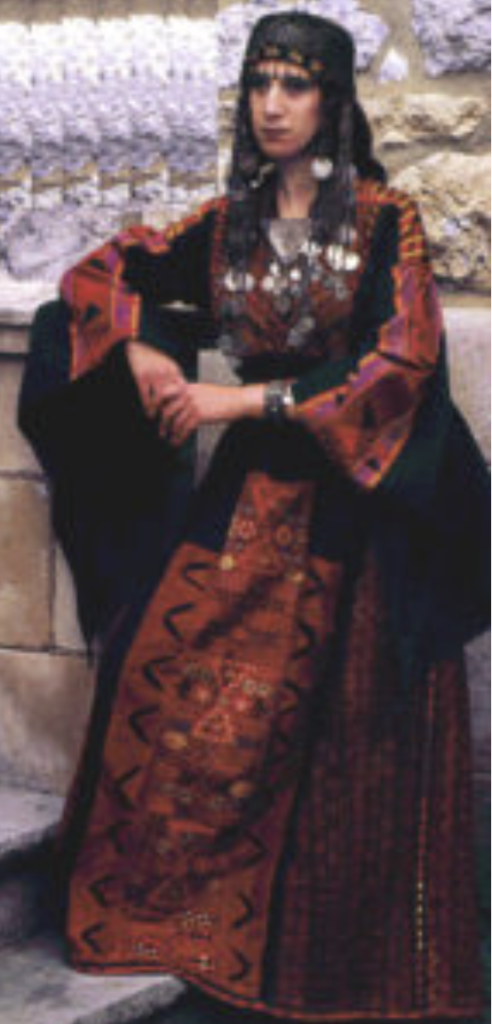
Jewelry was a very important part of a female set of clothing. Traditionally, Palestinian jewels were made from silver. A lot of various pieces were used: necklaces, chokers, bracelets, anklets, rings, nose rings, etc. Local blacksmiths were very skilled and made masterpieces from silver. Also, jewelry made in Egypt and Syria were imported to Palestine. Some pieces were used as just an embellishment, others served as talismans and amulets. Many adornments included chains and coins, others were wide silver bands. In the 1920s, gold jewelry appeared at the Palestinian markets, and women started to use gold instead of the traditional silver.
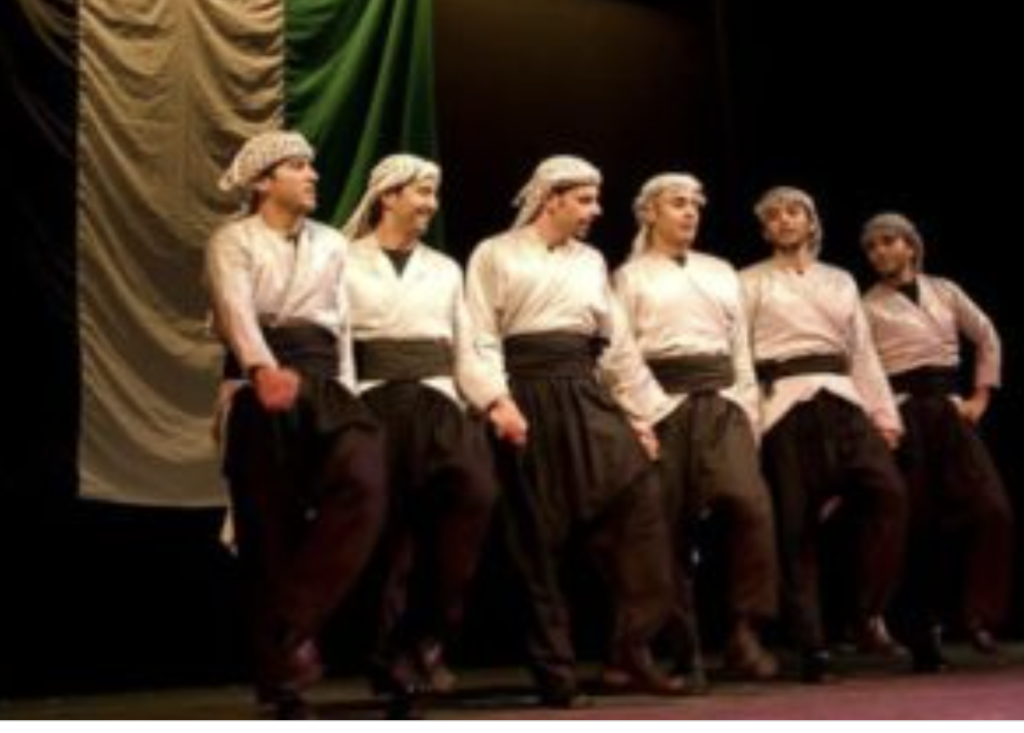
Male traditional clothing
The traditional costume of Palestinian men historically consisted of an undergarment, a kaftan, baggy trousers, an outer garment, a belt, and a headdress. The male outfit wasn’t as diverse and colorful as women’s but nevertheless, it still could tell a lot about the wearer. For example, you could find out his status, approximate age, and region of origin.
The undershirt was called “qamis”. It was made from white or beige cotton or fine wool. Qamis was long (in some areas, knee-length, and in others, ankle-length). The sleeves also were long.
The Palestinian baggy trousers were called “sirwal” or “shirwal”. They were long and wide, tied with a cord at the waist. The color of the fabric was usually black, dark blue, or white. The material was cotton.
Male outerwear in Palestine was long-sleeved “jubba” (“damer”) or short-sleeved “salta”. Jubba was a short garment with long wide sleeves. Salta was the same but with short sleeves. Both garments were worn over a qumbaz.
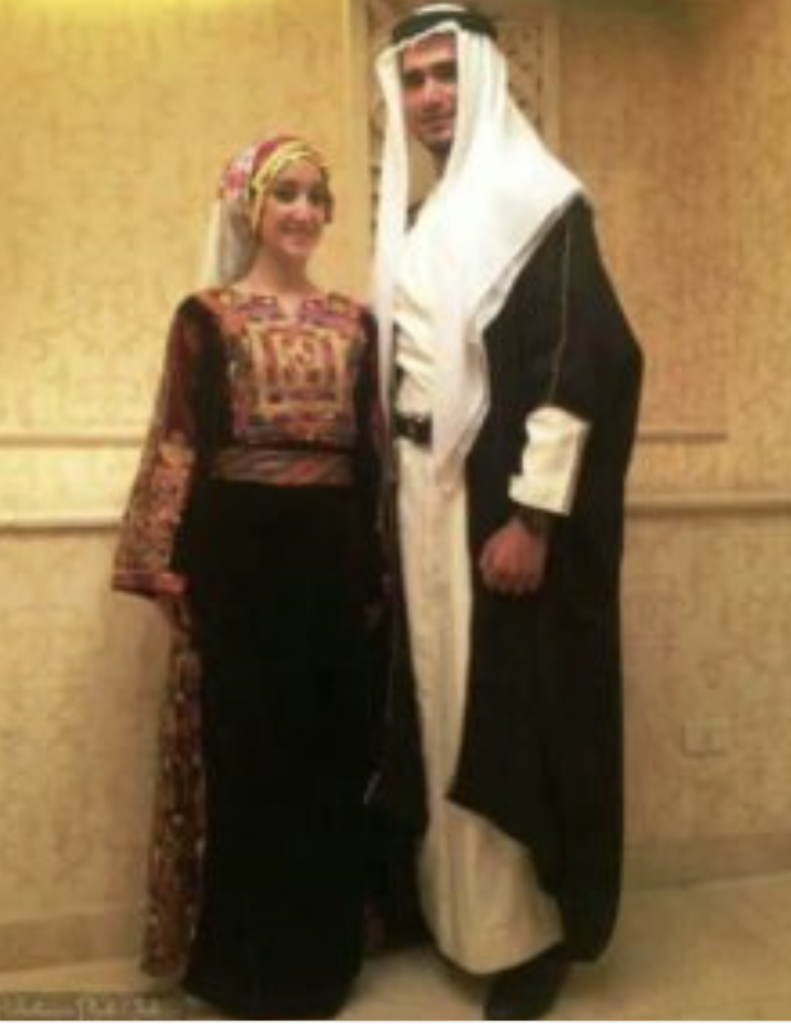
Another variant of outerwear was a cloak called “abaya”. This garment was festive and made from a fine fabric (any color of the fabric could be used). It was worn on top of a jubba and qumbaz. Abaya was used by both wealthy and poor people, and it always had to be high-quality. There were plenty of various designs of the abaya. One of them was called “bisht” – it was a short abaya with long sleeves.
Palestinian men wore fabric and leather belts called “hizam;” wide belts were called “lavandi”.
Sources:
The Traditional Clothing of Palestine I
Palestinian Traditional Clothing
Check out more posts on our BLOG!


